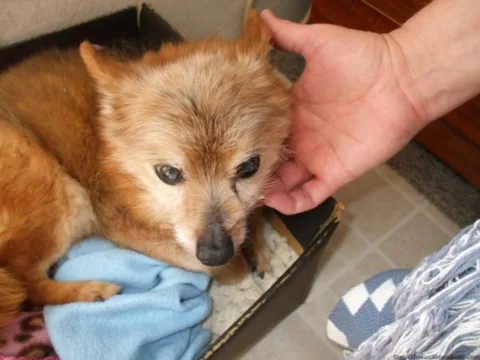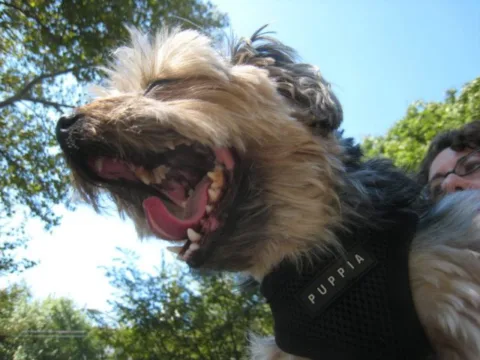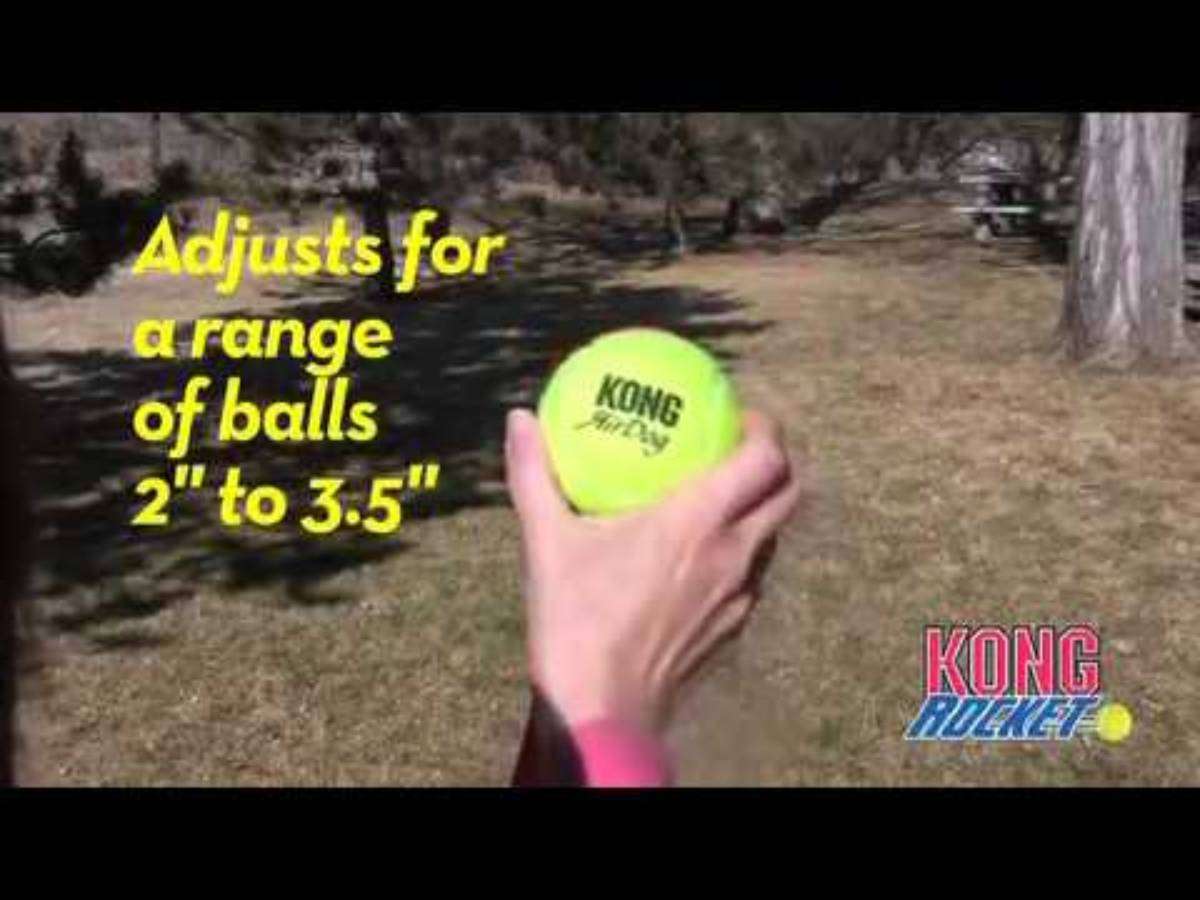If you’re very lucky, your faithful furry companion will live to a ripe old age.
I’ve been this lucky as my little dog Rascal, a Pomeranian/Yorkie mix has celebrated his 18th birthday. This means in human years this good old boy is 126 yrs old!
He has definitely earned the rank of Senior Citizen in our household.
As dogs age, a variety of health issues may come up. The most prevalent issue is the condition of their teeth.
Here’s what you need to know about caring for a dog with no teeth…
Dog Tooth Care Starts Early
Of course your best bet is to start a preventative maintenance program early, in order to help your dog keep his teeth as long as possible.
Here’s how to care for your dog’s teeth.
For my dog Rascal, once he passed middle age (about 8 or 9 years old) his teeth started going downhill.
When A Dog’s Teeth Start Falling Out
At first (for about a year or two), he had the occasional loose tooth. Eventually, he lost most of his smaller teeth.
By the time our dog reached about 13 or 14 years of age, his teeth problems became more significant. Over a period of about a year, he lost most of his remaining teeth.
During this time, I continually monitored his mouth, making sure that a tooth infection didn’t arise.
Feeding A Dog With No Teeth
Through our dog’s puppy stages and young adult life, his nourishment came in the form of dry dog food in one bowl and fresh water in a separate bowl. This was convenient for both him and I because he could eat whenever he felt the need, and as long as there was food in the bowl my duties were covered.
When his dental condition started to deteriorate, his ability to crunch the dry kernel’s of dog food diminished as well. When you’re dealing with a 7-pound dog, it doesn’t take long to realize he isn’t getting enough food. Any slight weight loss becomes quite noticeable.
To accommodate his failing teeth, we switched over to a soft but still dry (or semi-moist) dog food that comes sealed in plastic pouches. This worked out well throughout the period that he still had some viable teeth left with which to chew.
After a period of about 2 years, the last of his teeth finally fell out. By this time, even the softer dog food had become difficult for him to eat. To ease the burden, we switched to canned dog food which we further chopped up into even smaller particles.
At this point, our toothless dog is forced to lap up his food, rather than chew it. So breaking it up in the smallest pieces possible has made it easier for him to swallow the food.
No Teeth May Be Better Than Rotten Teeth
The most amazing part of this ongoing series of events is once he lost the last of his teeth his overall health improved noticeably!
Sadly dogs have no way of telling you they are in pain, though we all know how annoying a sore mouth or painful tooth can be. Once his teeth were gone, any residual infection or soreness quickly cleared up and the young spunky little dog that loved attention immediately returned.
Don’t assume that just because your dog has slowed down, seems out of sorts, or is always sleeping that it’s just a sign of getting old. Having a mouth full of bad teeth can really take the starch out of their sails. Dogs just don’t know how to tell you about it.
Finding The Right Food For Your Toothless Dog
Our toothless little dog continues to thrive.
It was a simple switch to canned dog food that made a measurable improvement in his life. I would encourage you to avoid canned dog foods that advertise “chunks in gravy.” The gravy part is good, but the chunks will be more than a toothless dog can handle and you will need to chop them to a finer consistency.
The brand of canned dog food you buy isn’t as critical as you may think. There are federal regulations in place which state the minimum nutritional requirements that all pet food products must meet. I think it’s more important to find a dog food that your pet enjoys and is able to eat easily.
In our case, little interference was needed on our part. Mother nature allowed the teeth to fall out without excessive inflammation or complications. Keep in mind, there is great risk of infection that can spread into the dog’s sinus cavities. In extreme cases, the infection can even spread into the brain when their teeth become abscessed. So, be sure to monitor your toothless dog’s mouth for this condition and have them checked by a veterinarian if you suspect pain or complications.
With luck, you may be as fortunate as I’ve been. My faithful dog seems more like the Energizer bunny these days. I think he’s going to keep on keeping on forever!





